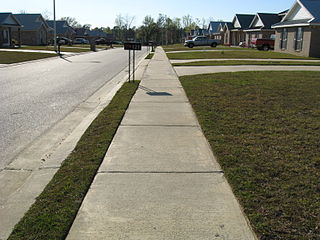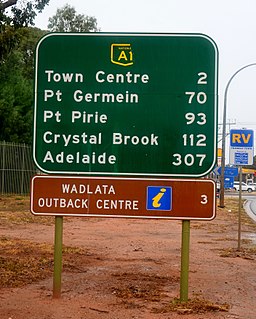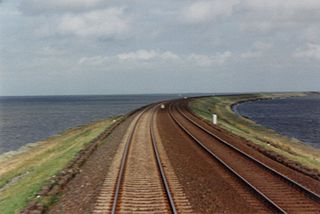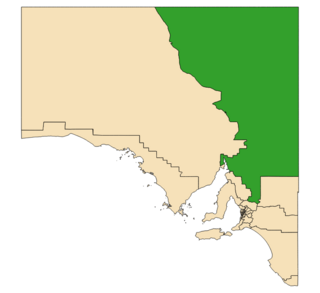| Weeroona Island South Australia | |||||||||||||||
|---|---|---|---|---|---|---|---|---|---|---|---|---|---|---|---|
| Coordinates | 33°06′07″S138°01′52″E / 33.101930°S 138.031060°E Coordinates: 33°06′07″S138°01′52″E / 33.101930°S 138.031060°E | ||||||||||||||
| Population | 225 (shared with other localities in the State Suburb of Port Flinders) (2011 census) [1] | ||||||||||||||
| Established | 1997 [2] | ||||||||||||||
| Postcode(s) | 5495 [3] | ||||||||||||||
| Time zone | ACST (UTC+9:30) | ||||||||||||||
| • Summer (DST) | ACST (UTC+10:30) | ||||||||||||||
| Location |
| ||||||||||||||
| LGA(s) | District Council of Mount Remarkable [4] | ||||||||||||||
| State electorate(s) | Stuart [5] | ||||||||||||||
| Federal Division(s) | Grey [6] | ||||||||||||||
| |||||||||||||||
| |||||||||||||||
| Footnotes | Coordinates [4] Locations [3] Climate [7] Adjoining localities [4] | ||||||||||||||
Weeroona Island (formerly known as Port Flinders) is a locality in the Australian state of South Australia about 209 kilometres (130 miles) north of the state capital of Adelaide and about 9.5 kilometres (5.9 mi) northeast of the city of Port Pirie. [3] [4]

South Australia is a state in the southern central part of Australia. It covers some of the most arid parts of the country. With a total land area of 983,482 square kilometres (379,725 sq mi), it is the fourth-largest of Australia's states and territories by area, and fifth largest by population. It has a total of 1.7 million people, and its population is the second most highly centralised in Australia, after Western Australia, with more than 77 percent of South Australians living in the capital, Adelaide, or its environs. Other population centres in the state are relatively small; Mount Gambier, the second largest centre, has a population of 28,684.

Adelaide city centre is the innermost locality of Greater Adelaide, the capital city of South Australia. It is known by locals simply as "The City" or "Town" to distinguish it from Greater Adelaide and from the City of Adelaide. The locality is split into two key geographical distinctions: the city "square mile", bordered by North, East, South and West Terraces; and the section of the parklands south of the River Torrens which separates the built up part of the city from the surrounding suburbs and North Adelaide.
Weeroona Island began as a private subdivision of land in the Hundreds of Pirie and Telowie. The subdivision was originally named “Port Flinders” by its proponents, the Trustees of the Mount Remarkable Mining Company, in about 1853. The name was subsequently replaced by other names including Price Nob, Benjamin Hill and Weeroona Island, and was officially reinstated by the Geographical Names Advisory Committee in 1993. Boundaries were created for the locality in March 1997 and included the Weeroona Island Shack Site. The locality’s name was changed to Weeroona Island in November 2013 following a display of “strong support from residents”. The name “Weeroona Island” is derived from the name of a holiday camp operated by the Broken Hill Proprietary Company on the coastline of a bay (now known as Weeroona Bay) located near Point Lowly on the eastern coast of Eyre Peninsula. [2] [4] [8]

Subdivision is the act of dividing land into pieces that are easier to sell or otherwise develop, usually via a plat. The former single piece as a whole is then known in the United States as a subdivision. If it is used for housing it is typically known as a housing subdivision or housing development, although some developers tend to call these areas communities.
The Hundred of Pirie is a cadastral unit of hundred located in the Mid North of South Australia in the approach to the lower Flinders Ranges. It is one of the hundreds of the County of Victoria. The principal township of the hundred is Port Pirie.

Point Lowly is the tip of a small peninsula north north-east of Whyalla in the Upper Spencer Gulf region of South Australia. The wider peninsula is shared by a combination of defence, industrial, residential, recreational and tourism interests. Port Bonython lies immediately to the north-west and is marked for future industrial expansion, driven by anticipated growth in the State's mining industry. The icons of the peninsula are the historic Point Lowly Lighthouse and the mass breeding aggregation of Giant Australian Cuttlefish which occurs inshore each winter.
The locality consists of an outcrop of land which is surrounded by low lying land that can be subject to inundation at high tide and which is connected to the Augusta Highway in the east by a causeway. [4] [9]

An outcrop or rocky outcrop is a visible exposure of bedrock or ancient superficial deposits on the surface of the Earth.

The Augusta Highway is the part of Australia's ring route located in South Australia between Port Wakefield and Port Augusta. It was named Augusta Highway in 2011, and was formerly known simply as Highway One and also as the Princes Highway, despite not being continuous to the Princes Highway in the southeast of the state.

A causeway is a track, road or railway on top of an embankment across "a low, or wet place, or piece of water". It can be constructed of earth, masonry, wood, or concrete. One of the earliest known wooden causeways is the Sweet Track in the Somerset Levels, England, that dates from the Neolithic age. Timber causeways may also be described as both boardwalks and bridges.
Land use within the locality consists of residential use and conservation. The former use consists of both permanent residence and ‘recreational housing’ located on the high ground while latter use is concerned with the low-lying land where built development is required to be minimal and limited to “low-intensity recreational uses” and where provided, should complement the environment of the locality. [9]

A residential area is a land used in which housing predominates, as opposed to industrial and commercial areas. Housing may vary significantly between, and through, residential areas. These include single-family housing, multi-family residential, or mobile homes. Zoning for residential use may permit some services or work opportunities or may totally exclude business and industry. It may permit high density land use or only permit low density uses. Residential zoning usually includes a smaller FAR than business, commercial or industrial/manufacturing zoning. The area may be large or small.

Conservation is an ethic of resource use, allocation, and protection. Its primary focus is upon maintaining the health of the natural world, its fisheries, habitats, and biological diversity. Secondary focus is on material conservation, including non-renewable resources such as metals, minerals and fossil fuels, and energy conservation, which is important to protect the natural world. Those who follow the conservation ethic and, especially, those who advocate or work toward conservation goals are termed conservationists.
Weeroona Island is located within the federal division of Grey, the state electoral district of Stuart and the local government area of the District Council of Mount Remarkable. [6] [4] [5]

The Division of Grey is an Australian electoral division in South Australia. The division was one of the seven established when the former Division of South Australia was redistributed on 2 October 1903 and is named for Sir George Grey, who was Governor of South Australia from 1841 to 1845.

Stuart is a single-member electoral district for the South Australian House of Assembly. At 330,656 km², it covers the northeast part of the state extending from just north of the Barossa Valley all the way to the Northern Territory, Queensland and New South Wales borders. The seat's main population centre is Port Augusta, however the seat spans from Kapunda, 80 km north of Adelaide, up to the state borders, and includes the agricultural areas of Orroroo, Peterborough, Jamestown, Burra and Leigh Creek. Stuart is the second-largest electorate by area in South Australia.

The Mount Remarkable District Council is a local government area located between the top of the Spencer Gulf and the base of the Southern Flinders Ranges in South Australia. The district encompasses a wide variety of towns, including coastal ports and agricultural centres. The economy of the district council is largely based on agriculture.



